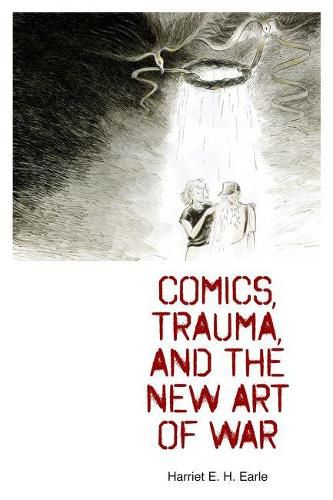Readings Newsletter
Become a Readings Member to make your shopping experience even easier.
Sign in or sign up for free!
You’re not far away from qualifying for FREE standard shipping within Australia
You’ve qualified for FREE standard shipping within Australia
The cart is loading…






This title is printed to order. This book may have been self-published. If so, we cannot guarantee the quality of the content. In the main most books will have gone through the editing process however some may not. We therefore suggest that you be aware of this before ordering this book. If in doubt check either the author or publisher’s details as we are unable to accept any returns unless they are faulty. Please contact us if you have any questions.
Conflict and trauma remain among the most prevalent themes in film and literature. Comics has never avoided such narratives, and comics artists are writing them in ways that are both different from and complementary to literature and film. Harriet E. H. Earle brings together two distinct areas of research-trauma studies and comics studies-to provide a new interpretation of a long-standing theme. Focusing on representations of conflict in American comics after the Vietnam War, Earle claims that the comics form is uniquely able to show traumatic experience by representing events as viscerally as possible. Using texts from across the form and placing mainstream superhero comics alongside alternative and art comics, Earle suggests that comics are the ideal artistic representation of trauma. Because comics bridge the gap between the visual and the written, they represent such complicated narratives as loss and trauma in unique ways, particularly through the manipulation of time and experience. Comics can fold time and confront traumatic events, be they personal or shared, through a myriad of both literary and visual devices. As a result, comics can represent trauma in ways that are unavailable to other narrative and artistic forms.
With themes such as dreams and mourning, Earle concentrates on trauma in American comics after the Vietnam War. Examples include Alissa Torres’s American Widow, Doug Murray’s The ‘Nam, and Art Spiegelman’s much-lauded Maus. These works pair with ideas from a wide range of thinkers, including Sigmund Freud, Mikhail Bakhtin, and Fredric Jameson, as well as contemporary trauma theory and clinical psychology. Through these examples and others, Comics, Trauma, and the New Art of War proves that comics open up new avenues to explore personal and public trauma in extraordinary, necessary ways.
$9.00 standard shipping within Australia
FREE standard shipping within Australia for orders over $100.00
Express & International shipping calculated at checkout
This title is printed to order. This book may have been self-published. If so, we cannot guarantee the quality of the content. In the main most books will have gone through the editing process however some may not. We therefore suggest that you be aware of this before ordering this book. If in doubt check either the author or publisher’s details as we are unable to accept any returns unless they are faulty. Please contact us if you have any questions.
Conflict and trauma remain among the most prevalent themes in film and literature. Comics has never avoided such narratives, and comics artists are writing them in ways that are both different from and complementary to literature and film. Harriet E. H. Earle brings together two distinct areas of research-trauma studies and comics studies-to provide a new interpretation of a long-standing theme. Focusing on representations of conflict in American comics after the Vietnam War, Earle claims that the comics form is uniquely able to show traumatic experience by representing events as viscerally as possible. Using texts from across the form and placing mainstream superhero comics alongside alternative and art comics, Earle suggests that comics are the ideal artistic representation of trauma. Because comics bridge the gap between the visual and the written, they represent such complicated narratives as loss and trauma in unique ways, particularly through the manipulation of time and experience. Comics can fold time and confront traumatic events, be they personal or shared, through a myriad of both literary and visual devices. As a result, comics can represent trauma in ways that are unavailable to other narrative and artistic forms.
With themes such as dreams and mourning, Earle concentrates on trauma in American comics after the Vietnam War. Examples include Alissa Torres’s American Widow, Doug Murray’s The ‘Nam, and Art Spiegelman’s much-lauded Maus. These works pair with ideas from a wide range of thinkers, including Sigmund Freud, Mikhail Bakhtin, and Fredric Jameson, as well as contemporary trauma theory and clinical psychology. Through these examples and others, Comics, Trauma, and the New Art of War proves that comics open up new avenues to explore personal and public trauma in extraordinary, necessary ways.